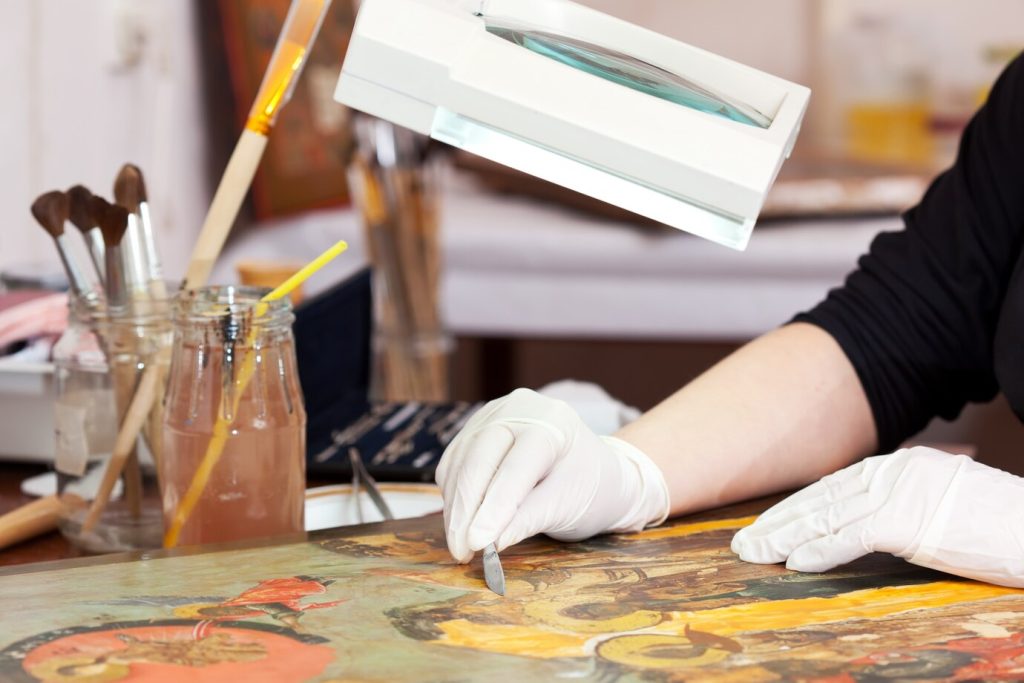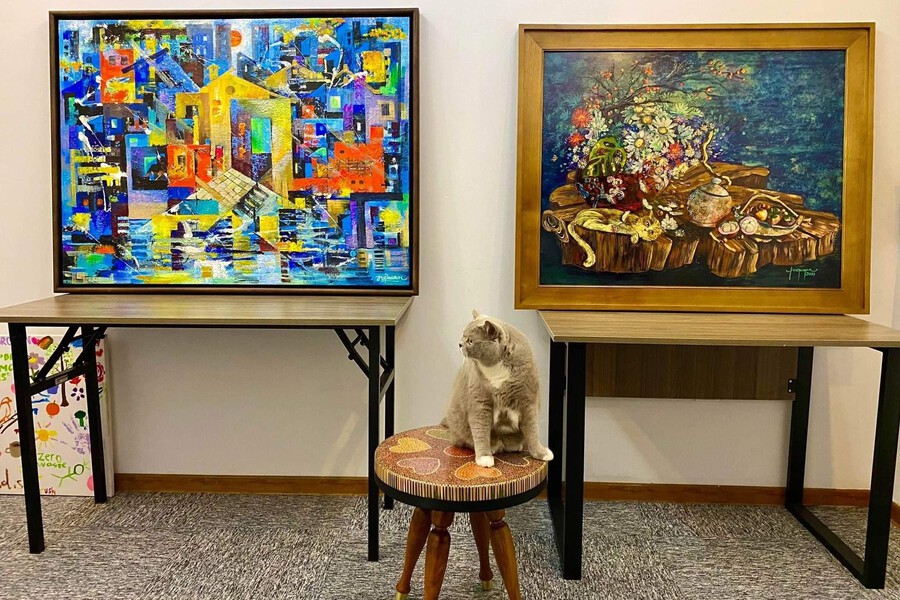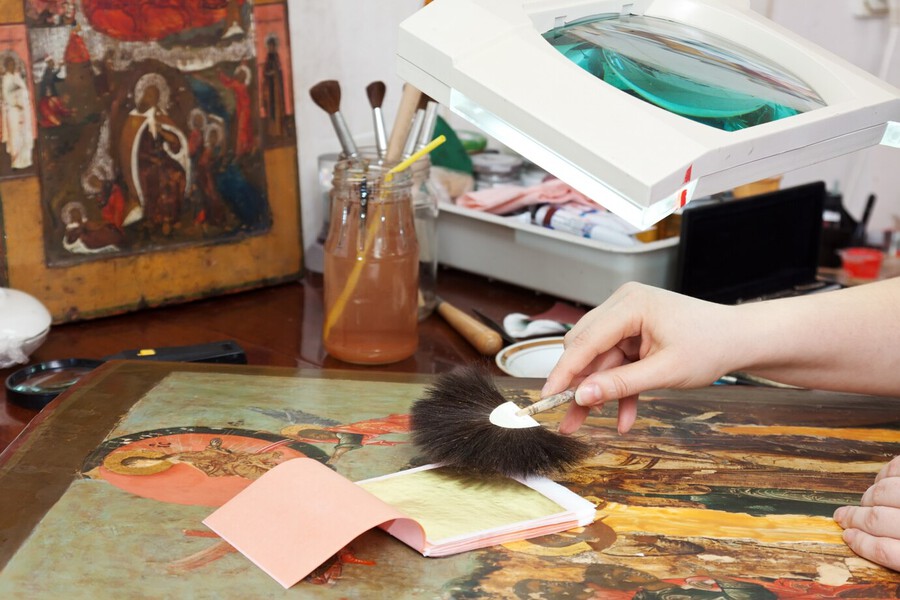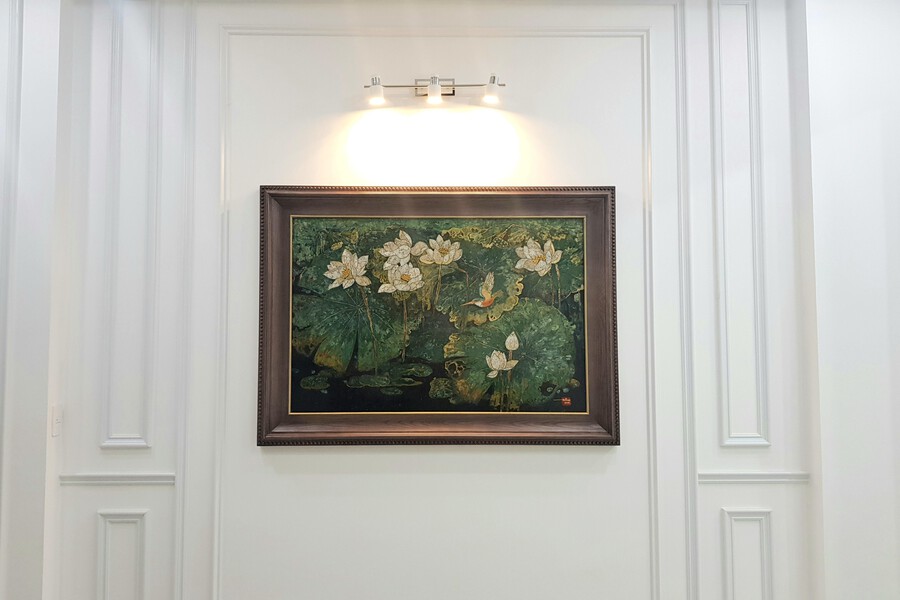The value of lacquer paintings lies at the heart of their status as a pinnacle of artistic achievement, seamlessly blending tradition, innovation, and cultural depth. These works extend beyond their stunning visual appeal, encompassing intricate craftsmanship, economic significance, and remarkable longevity. This article delves into the essence of lacquer paintings, with a focus on Vietnamese lacquer art, exploring their creation process, global recognition, and enduring relevance in the modern art world.
What Are Lacquer Paintings?
Origins and Evolution
Lacquer paintings, known as “tranh sơn mài” in Vietnamese, are a distinctive art form that emerged in Vietnam during the early 20th century. Rooted in the ancient craft of lacquerware, this medium was elevated to fine art status by pioneering artists who sought to blend traditional techniques with modern artistic expression. The value of lacquer paintings is evident in their use of natural lacquer, derived from the sap of lacquer trees, combined with vibrant pigments and unique materials to create a glossy, reflective finish. These paintings often depict themes such as rural landscapes, mythological narratives, or historical events, capturing the essence of Vietnam’s cultural heritage. Their luminous surfaces, intricate details, and rich textures make them a standout in the global fine art landscape, appealing to both traditionalists and contemporary art lovers.
Cultural Significance and Global Reach
Lacquer paintings are more than mere artworks; they are a powerful symbol of Vietnam’s artistic legacy and national pride. They embody the country’s creative resilience, serving as a bridge between ancient craftsmanship and modern innovation. The value of lacquer paintings is deeply tied to their role as cultural ambassadors, preserving traditional stories and aesthetics while engaging with global audiences. Displayed in prestigious museums, galleries, and private collections worldwide, these works have elevated Vietnam’s status in the international art community. From Paris to New York, lacquer paintings are celebrated for their ability to transcend cultural boundaries, inviting viewers to appreciate the beauty and complexity of Vietnamese artistry. Their global appeal underscores their importance as a medium that fosters cross-cultural dialogue and inspires universal admiration.
What Is the Value of Lacquer Paintings?
Materials and Elaborate Manufacturing Techniques
A cornerstone of the value of lacquer paintings is the use of exquisite and unconventional materials that set them apart from other art forms. Artists meticulously incorporate gold, silver, mother-of-pearl, eggshells, black lacquer, and even cockroach lacquer to create mesmerizing visual effects. These materials are chosen not only for their aesthetic qualities but also for their ability to add texture, depth, and a sense of movement to the artwork. For instance, mother-of-pearl lends an iridescent shimmer, while eggshells create intricate mosaic patterns. The manufacturing process is equally remarkable, involving a series of complex stages that demand precision and expertise. It begins with preparing a wooden or bamboo base, followed by applying multiple layers of lacquer, embedding decorative elements, and polishing the surface to achieve a flawless finish. Each step is labor-intensive and requires a deep understanding of the medium, ensuring that every painting is a unique masterpiece. This meticulous craftsmanship significantly enhances the value of lacquer paintings, making them prized possessions in the art world.
Time-Intensive Creation Process
The creation of a lacquer painting is a labor of love that demands extraordinary patience, skill, and dedication. The process is multifaceted, beginning with priming the surface to ensure a smooth foundation. Artists then apply individual layers of color, often using natural pigments to achieve vibrant hues. Decorative elements, such as gold or silver powder, are sprinkled or carefully embedded, while materials like eggshells or mother-of-pearl are meticulously placed to create intricate patterns. Multiple coats of lacquer are applied, with each layer requiring days or even weeks to dry naturally before the next can be added. The final stage involves painstaking polishing to achieve a mirror-like finish that enhances the painting’s reflective quality. Depending on the complexity of the design, a single painting can take months or even years to complete. This time-intensive process underscores the value of lacquer paintings, as each piece represents an immense investment of labor, creativity, and artistic vision. The dedication required to produce such works elevates their status as true masterpieces.
Economic and Collectible Significance
Lacquer paintings hold substantial economic and collectible value, positioning them as highly desirable assets in the global art market. As a form of high-end fine art, they attract discerning collectors, art consultants, and investors who recognize their cultural and aesthetic significance. Vietnamese lacquer paintings, in particular, have garnered international acclaim, with works featured in renowned museums, galleries, and private collections across the globe. Their rarity, combined with the unparalleled craftsmanship involved, drives demand and increases their market value. The value of lacquer paintings is further amplified by their status as cultural treasures, making them not only a financial investment but also a symbol of artistic sophistication. Auctions and exhibitions featuring lacquer paintings often draw significant attention, with pieces fetching high prices due to their exclusivity and historical importance. For collectors, owning a lacquer painting is a testament to their appreciation of exceptional artistry and a connection to Vietnam’s rich cultural heritage.
Sustainability, Durability, and Growing Value
Lacquer paintings are celebrated for their sustainability and durability, qualities that distinguish them from many other art forms. The natural lacquer and high-quality materials used in their creation make them highly resistant to moisture, heat, and environmental wear, ensuring they remain vibrant and intact for decades or even centuries. This longevity contributes to their increasing value over time, as their rarity, historical significance, and enduring beauty make them coveted by collectors. Unlike paintings that may fade, crack, or degrade, lacquer artworks appreciate in value as they age, much like fine antiques or rare artifacts. The value of lacquer paintings as a long-term investment is further enhanced by their eco-friendly production, which relies on natural resources and traditional methods. This sustainability appeals to collectors who prioritize environmental responsibility alongside aesthetic excellence, making lacquer paintings a forward-thinking choice in the art world.
Why Lacquer Paintings Remain Relevant
Blending Tradition with Contemporary Innovation
The value of lacquer paintings is amplified by their ability to evolve with the times while staying true to their roots. Artists skillfully blend traditional techniques with modern themes, creating works that resonate with diverse audiences, from seasoned collectors to younger art enthusiasts. Contemporary lacquer paintings often explore global issues, such as environmental concerns or cultural identity, while retaining the medium’s signature glossy finish and intricate detailing. This adaptability ensures that lacquer paintings remain relevant, adding sophistication and cultural depth to homes, offices, galleries, and public spaces. By embracing innovation while honoring tradition, lacquer artists keep the medium vibrant and dynamic, ensuring its continued appeal in an ever-changing art world.
A Sustainable and Eco-Friendly Art Form
The use of natural lacquer and environmentally friendly materials aligns with the growing demand for sustainable art practices. The value of lacquer paintings is bolstered by their minimal ecological footprint, making them an attractive choice for environmentally conscious collectors. Unlike synthetic materials that may harm the environment, natural lacquer is biodegradable and sourced from renewable resources. By prioritizing traditional methods, lacquer art offers a model for sustainable creativity that balances beauty with responsibility. This eco-conscious approach enhances the medium’s appeal in an era where sustainability is a key consideration for art buyers and collectors.
Inspiring Global Appreciation
Lacquer paintings have become a global phenomenon, with their influence extending far beyond Vietnam. Their presence in international exhibitions, auctions, and cultural events highlights their universal appeal and reinforces their status as a valuable art form. The value of lacquer paintings lies in their ability to foster cross-cultural dialogue, inviting viewers from diverse backgrounds to appreciate the beauty and complexity of Vietnamese artistry. Whether displayed in a European museum or a private collection in Asia, these works spark conversations about creativity, heritage, and the power of art to connect people across borders.
Conclusion
The value of lacquer paintings transcends their visual splendor, encompassing their cultural significance, unparalleled craftsmanship, and enduring durability. These artworks are a testament to the artistry and dedication of their creators, embodying Vietnam’s rich cultural heritage while embracing modern innovation. From the intricate materials and time-intensive processes to their economic potential and sustainability, lacquer paintings offer a unique blend of aesthetic, historical, and financial worth. They continue to captivate and inspire, serving as both timeless treasures and forward-looking investments. Whether displayed in a gallery, a home, or a collector’s archive, the lasting worth of lacquer paintings makes them an invaluable addition to the world of fine art, ensuring their legacy for generations to come.
Discover the value of lacquer paintings by exploring the unique and intricate artworks at Nguyen Art Gallery – a space that truly honors the essence of Vietnamese art.




